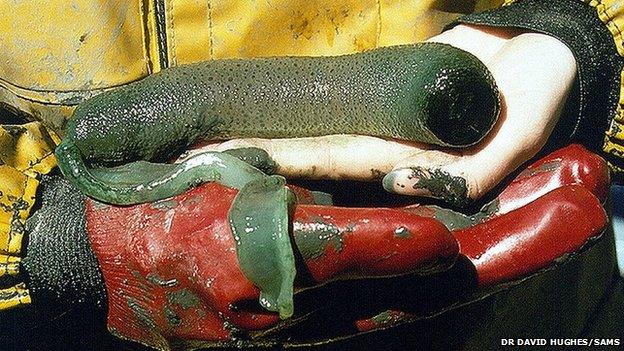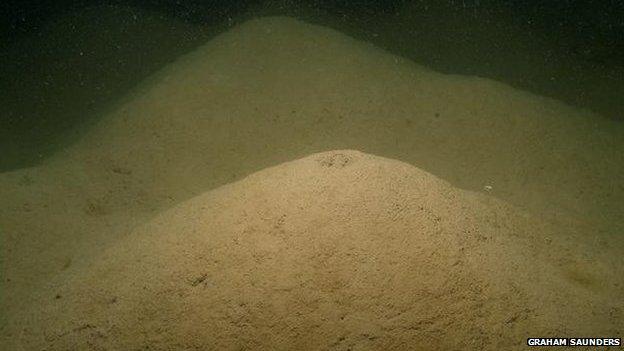The burrowers: Meet the mud volcano worm
- Published

The muddy marvellous mud volcano worm
They resemble low budget horror movie monsters but Scottish Natural Heritage say people should care about the protection of these strange, green sea creatures.
Cradled in the hands of a marine scientist, the mud volcano worm (Maxmuelleria lankesteri) looks like a slimy gherkin with a tail.
Down on the bottom of deep blue seas, the burrowing animals create mounds of mud up to a metre (3ft) high.
Last week, Scottish Natural Heritage said the "UK's biggest and best known example", external of this unusual habitat had been found in Loch Sween, a sea loch in Argyll. The mounds cover an area of about 1,630 acres (660ha) on the loch bed.
Scotland has some of Europe's largest areas of burrowed mud, which is made by mud volcano worms and other burrowers such as brittlestars, crabs and shrimps.
These areas are found in the Minch, Moray Firth, Firth of Forth, the northern North Sea and in deep water around the St Kilda archipelago and Rockall.

Muddy mounds of up to a metre (3ft) high have been found in Loch Sween
According to SNH, burrowed mud is a "surprisingly important" marine habitat that supports a "rich community" of animals.
The burrowers churn up mud and fine sand, oxygenating it and mixing in nutrients and minerals.
This environment attracts shellfish, tube worms, sea pens, fireworks anemone and fish.
Many of the animals that are drawn to the burrowed mud have an economic value.
They include langoustine, which is caught and then sold to markets in France and Spain, and also commercially fished cod, haddock and whiting.
So the next time you have a fish supper and consider a pickled gherkin to go with it, spare a thought for the burrowing mud volcano worm.
Related topics
- Published17 December 2013